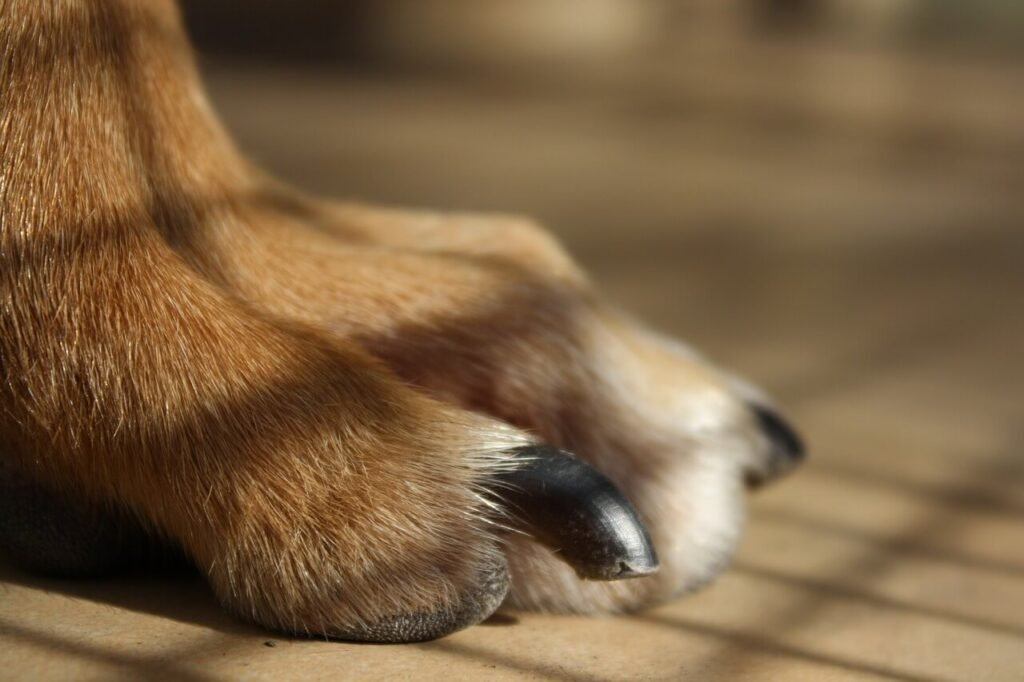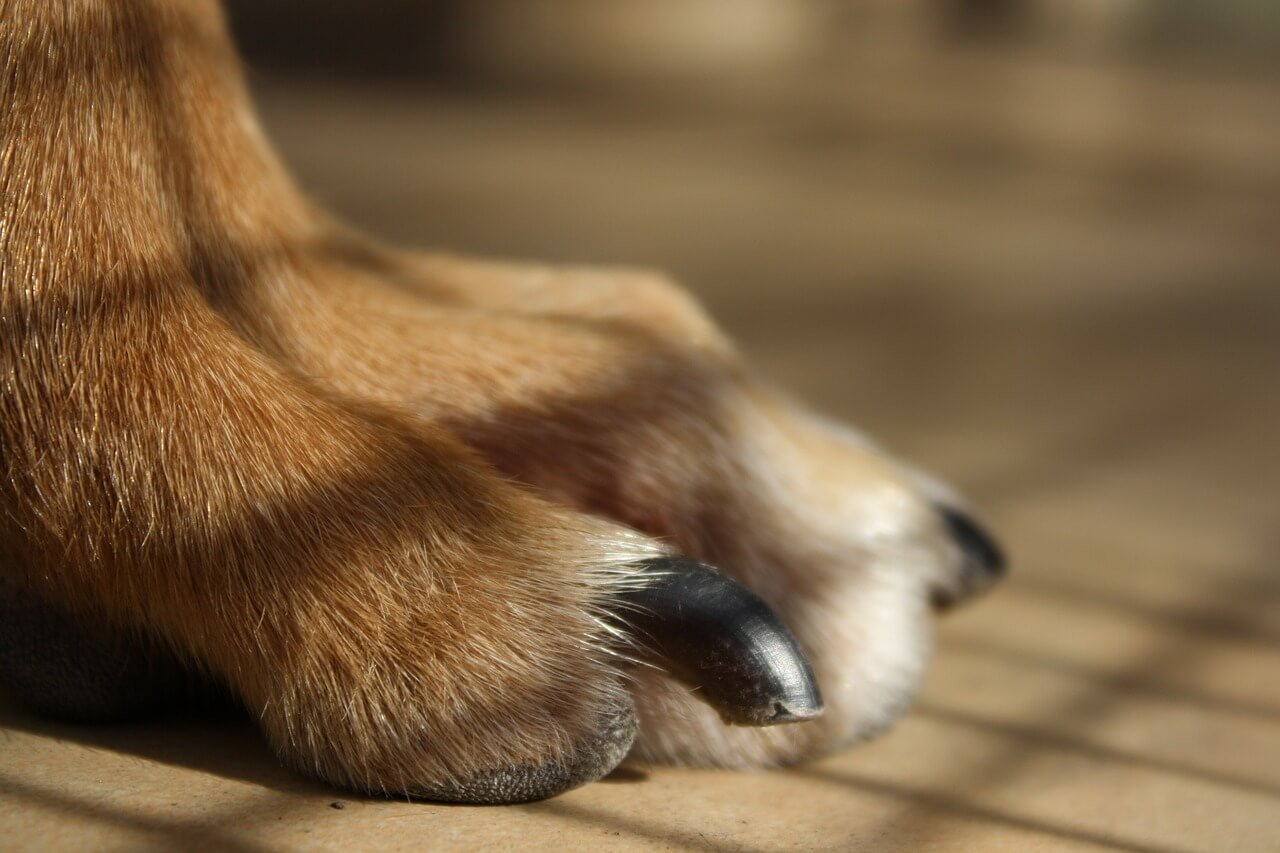Why Is My Dog Biting Their Nails?
Dogs biting their nails may seem like a quirky or harmless habit, but it can sometimes signal underlying issues that require attention. While some dogs chew their nails out of boredom or curiosity, others may do so due to discomfort, stress, or health concerns. Understanding the reasons behind this behavior is crucial for ensuring your furry friend stays happy and healthy. In this blog post, we’ll explore the potential causes of nail-biting in dogs, how to address it, and tips for maintaining proper paw care. With a little guidance, you can help your dog break this habit—or determine whether it’s time to consult a professional.
Common Reasons Why Dogs Bite Their Nails
If your dog has started biting their nails, there are several possible explanations. Identifying the root cause is the first step toward addressing the issue effectively.
Boredom or Lack of Stimulation:
Dogs often resort to nail-biting as a way to entertain themselves when they’re not mentally or physically engaged.Anxiety or Stress:
Nail-biting can be a self-soothing behavior triggered by anxiety, fear, or changes in their environment.Allergies or Skin Irritation:
Allergies, dry skin, or irritants trapped between the toes may cause itching, leading your dog to bite their nails for relief.Overgrown or Ingrown Nails:
If a dog’s nails are too long or ingrown, they may bite them in an attempt to alleviate discomfort.Parasites Like Fleas or Ticks:
External parasites can cause intense itching, prompting your dog to nibble at their paws and nails.
By pinpointing the cause of your dog’s nail-biting, you can take targeted steps to address the behavior and improve their well-being.

Signs Your Dog’s Nail-Biting May Be a Problem
While occasional nail-biting isn’t always concerning, certain signs indicate it might be more than just a harmless habit. Watch for these red flags to determine if intervention is needed.
Excessive Chewing or Licking:
If your dog spends hours chewing their nails or paws, it could indicate discomfort or compulsive behavior.Redness or Swelling Around the Paws:
Inflammation or irritation around the paw pads suggests a possible infection or allergic reaction.Broken Skin or Bleeding:
Biting until the skin breaks increases the risk of infection and requires immediate attention.Changes in Behavior:
A normally calm dog becoming restless or irritable may be experiencing pain or stress related to their paws.Foul Odor from the Paws:
A strong smell emanating from the paws could indicate a bacterial or fungal infection caused by excessive biting.
Recognizing these warning signs allows you to act promptly and prevent further complications.
Check this guide 👉What Angle to Trim Dog Nails? Best 7 Expert Tips!
Check this guide 👉Understanding Dog Nail Anatomy: Best 7 Expert Tips!
Check this guide 👉Understanding Dog Nail Cancer: Best 7 Expert Tips!
Possible Causes of Nail-Biting | Solutions to Address the Issue |
|---|---|
Boredom or lack of exercise | Increase daily walks, playtime, and toys |
Anxiety or stress | Provide calming aids like music or pheromones |
Allergies or skin irritation | Consult a vet for allergy testing and treatment |
Overgrown or ingrown nails | Regularly trim nails and inspect paw health |
Parasites like fleas or ticks | Use vet-recommended flea/tick prevention products |
How to Stop Your Dog from Biting Their Nails
Stopping your dog from biting their nails requires patience and consistency. Here are some actionable steps to curb this behavior and promote healthier habits.
Provide Mental and Physical Stimulation:
Engage your dog with interactive toys, puzzles, or training sessions to redirect their energy away from nail-biting.Establish a Regular Grooming Routine:
Keep your dog’s nails trimmed and their paws clean to reduce the urge to bite.Use Positive Reinforcement:
Reward your dog with treats or praise when they refrain from biting their nails to encourage good behavior.Introduce Chew Alternatives:
Offer safe chew toys or bones to satisfy your dog’s natural urge to gnaw.Consult a Veterinarian or Trainer:
If the behavior persists, seek professional advice to rule out medical issues or behavioral problems.
With consistent effort, you can help your dog overcome their nail-biting habit and ensure their overall well-being.
Preventing Future Nail-Biting Episodes
Prevention is key to stopping nail-biting from becoming a recurring issue. These proactive measures can keep your dog’s paws healthy and discourage unwanted behaviors.
Schedule Regular Vet Check-Ups:
Routine visits allow your vet to monitor your dog’s paw health and address potential problems early.Maintain Proper Hygiene:
Clean your dog’s paws regularly to remove dirt, debris, and allergens that may trigger irritation.Create a Calming Environment:
Minimize stressors in your home by providing a safe space where your dog feels secure and relaxed.Monitor Diet and Nutrition:
Ensure your dog’s diet supports skin and coat health, as deficiencies can exacerbate itching and discomfort.Teach Commands for Distraction:
Train your dog to respond to commands like “leave it” to redirect their focus during moments of nail-biting.
Taking these preventive steps can significantly reduce the likelihood of future nail-biting episodes.
Additional Tips for Managing Anxiety-Related Nail-Biting
If anxiety is the root cause of your dog’s nail-biting, these strategies can help soothe their nerves and reduce the behavior.
Use Calming Products:
Items like anxiety wraps or calming sprays can provide comfort during stressful situations.Stick to a Consistent Routine:
Dogs thrive on predictability; maintaining a steady schedule reduces uncertainty and stress.Provide Safe Spaces:
Designate a quiet area where your dog can retreat when feeling overwhelmed.Practice Desensitization Techniques:
Gradually expose your dog to triggers in a controlled manner to build confidence and resilience.Consider Professional Help:
A certified animal behaviorist can offer tailored strategies for managing anxiety-related behaviors.
Addressing anxiety holistically can significantly improve your dog’s emotional well-being and curb nail-biting tendencies.
How to Spot and Treat Paw Infections
Paw infections are a common cause of nail-biting in dogs and require prompt attention. Look for these symptoms and follow these treatment steps.
Signs of Infection:
Redness, swelling, discharge, or persistent licking are clear indicators of an infection.Clean the Affected Area:
Gently wash your dog’s paws with warm water and mild soap to remove dirt and bacteria.Apply Antibacterial Ointment:
Use vet-approved ointments to promote healing and prevent further irritation.Protect the Paws:
Place protective booties on your dog’s feet to prevent further damage while healing.Seek Veterinary Care:
Persistent or severe infections require antibiotics or other treatments prescribed by a vet.
Timely intervention ensures your dog recovers quickly and prevents complications.
Fun Activities to Distract Your Dog from Nail-Biting
Engaging your dog in fun, stimulating activities can redirect their focus and discourage nail-biting. Try these ideas to keep them entertained.
Interactive Puzzle Toys:
Toys that dispense treats challenge your dog’s mind and keep them occupied.Agility Training:
Set up a mini obstacle course in your backyard to burn off excess energy.Fetch or Frisbee Games:
Classic fetch sessions provide both physical exercise and mental stimulation.Tug-of-War Sessions:
Playing tug-of-war satisfies your dog’s natural urge to bite and chew in a controlled setting.Obedience Classes:
Enroll your dog in training classes to teach new skills while strengthening your bond.
By keeping your dog busy and engaged, you can minimize opportunities for nail-biting and foster a happier, healthier lifestyle.
Frequently Asked Questions About Dog Nail-Biting
Is it normal for dogs to bite their nails occasionally?
Yes, mild nail-biting can be part of regular grooming. However, excessive or obsessive behavior warrants investigation.
Can diet affect my dog’s nail-biting habit?
Absolutely. Food allergies or nutritional deficiencies can trigger itchiness and subsequent nail-biting.
How do I know if my dog has parasites?
Look for signs like excessive scratching, visible bugs, or red bumps on their skin. A vet can confirm through tests.
Will punishing my dog stop them from biting their nails?
No. Punishment can increase anxiety and worsen the behavior. Positive reinforcement works better.
Are certain breeds more prone to nail-biting?
While no specific breed is predisposed, high-energy or anxious breeds may exhibit compulsive behaviors more frequently.
Supporting Your Dog’s Paw Health and Happiness
Dog nail-biting is a behavior that can stem from various causes, ranging from boredom to serious health issues. By understanding the triggers and taking proactive steps, you can help your dog feel more comfortable and content. Whether it’s through increased exercise, regular grooming, or professional guidance, prioritizing your dog’s paw health ensures they lead a happy, active life. Remember, a little attention and care go a long way in keeping those paws—and your pup—thriving.
Canned Pumpkin for Cat Diarrhea: Best 7 Expert Tips! Natural remedy to firm stools, soothe upset bellies, and support gut health safely.
Can a Cat Give You Scabies? Best 7 Expert Tips! Discover the truth about feline mites, human skin risks, and how to protect yourself—without panic.
Cat Flea vs Human Flea: Best 7 Expert Tips! Discover the truth about bites, species, and how to eliminate infestations for good.
Weird Cat Behaviors: Best 7 Expert Tips! Discover why cats do strange things—and how to understand, not punish, their instincts for a happier home.





